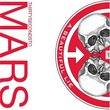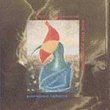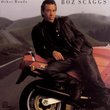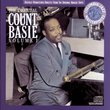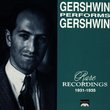| All Artists: Shankar, Menuhin Title: West Meets East Members Wishing: 2 Total Copies: 0 Label: Bgo - Beat Goes on Release Date: 7/14/1999 Album Type: Import Genres: International Music, Jazz, Special Interest, Pop, Classical Styles: Far East & Asia, Reggae, India & Pakistan, India, Chamber Music, Historical Periods, Modern, 20th, & 21st Century, Instruments, Strings Number of Discs: 1 SwapaCD Credits: 1 UPCs: 5017261204455, 2605000030095 |
Search - Shankar, Menuhin :: West Meets East
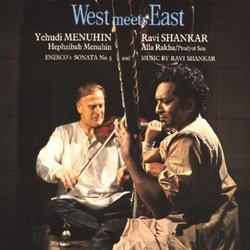 | Shankar, Menuhin West Meets East Genres: International Music, Jazz, Special Interest, Pop, Classical
|
Larger Image |
CD DetailsSimilarly Requested CDs
|
CD ReviewsTwo stars shine 06/22/2000 (5 out of 5 stars) "Both Shankar and Menuhin are masters who clearly shine on this studio concert. Rarely can one hear such complex melodies and improvisation played so perfectly. These two individuals create memories with their love of each other's classical music styles. Jazz, classical, Indian, and world music lovers will all be thrilled by this collection of masterpieces. There is also a companion live verstion of this album which is equally magnificent. I have used both as gifts repeatedly. Do not miss an oportunity to hear utter innovation." East Meets West Thomas M. Slover | 11/22/2000 (5 out of 5 stars) "This is truly one of the most lovely, engaging, and encompassing joining of two classic traditions and true masters. Menuhin lets his western ego free and joins with Ravi Shankar to make, what I feel, a landmark musical statement." West meets East... and the result is somewhat frustrating Discophage | France | 06/10/2007 (3 out of 5 stars) "Ah! The glorious Sixties, the Age of Gold. The Beatles had long hair and beards, they wore colorful shirts and bell-bottom pants, crossed Abbey Road bare-footed, sang Lucy in the Sky with Diamonds and even had their own private Indian Guru ; yes, West met East, and Yehudi Menuhin met Ravi Shankar.
This is the reissue of a historical recording, made in 1966 and crowning, as the liner notes recall, a friendship established as early as 1952. The title is appropriate: it is more a case of the Western instrument and player trying to blend into an alien tradition, than the reverse. Wouldn't it have been nice (and not out of place) to have tried an arrangement of Enesco's Sonata with Sitar accompaniment! But note that Menuhin is absent from the second piece, "Puriya Kalyan", played by Sitar alone, and Shankar doesn't appear in the first piece, "Prabhati", played by Menuhin and All Rakha on tabla (percussion). So the two musicians are featured together only in the third piece, "Swara-Kakali", which I find more successful than the first in its blending of Western violin and Indian music, thanks to the more subtle, Enesco-like violin effects used in it: harmonics and glissandos on high notes, hushed tremolos scales to the upward reaches, etc. As recorded, Menuhin's violin sounds a bit dry and wiry, but that less than appealing feature of his playing is most of the times masked by Shankar's Sitar. Still, for those liking that kind of music, the three pieces are disappointingly short (deceptively, no timings are given on the disc's cover: they clock at 4:08 / 11:44 / 8:46). One expects improvisations in Indian Music to last hours - Morton Feldman more than Anton Webern. Ultimately the encounter wets one's appetite but then frustrates rather than satiates it. Enescu (or Enesco as he is know in France, his second homeland) of course had no long hair and beard, did not cross Abbey Road bare-footed and, while I can give no assurance as to how many flower-printed shirts he owned throughout his life, I am ready to stake my hand that he never wore bell-bottom pants. Yet in his 3rd Violin and Piano Sonata - possibly his towering masterpiece, along with the later "Impressions d'Enfance" also for Violin and Piano, and equal to anything that was written for these two instruments in the first half of the 20th Century - he invented a uniquely personal sound-world, inspired by Rumanian Gipsy music, rhapsodic and whimsical, and displaying a wide array technical effects used for their unique coloring and expressive possibilities: trills, mordents, acciaccaturas (also in the piano writing, lending it a unique, "aquatic" quality), upward portamentos, quarter tones, harmonics, non vibrato playing, sul ponticello (on the bridge), striking with the tip of the bow. Any recording of Enescu by Menuhin will be of special interest and value, as the latter was a pupil of the Rumanian all-out musician (Enescu was equally proficient as violinist, pianist and composer). In their second recording of the piece (the first, from 1936, can be found on Menuhin Plays Enescu, Szymanowski, Prokofiev, Ravel), Menuhin and his sister Hepzibah turn out an animated and impassioned reading, very close in spirit to their first, alive to the Sonata's whimsical and playful dance-like moments, but with no loss in the more brooding and lamenting moods. But Menuhin elicits no particular beauty of tone from his instrument, and is further unaided by a very close recording pickup. As a result the second movement's non vibrato harmonics are particularly wearing on the ear and loose some of the mesmerizing, other-worldly quality they should have. I suppose the fiddler can easily loose count of the piano's ostinato quintuplets that open that same movement (a reminiscence of the "toaca", the wooden sticks that monks drum at dawn in some Rumanian monasteries), as Menuhin, like André Gertler before him (Milhaud & Enescu: Concerto for Violin /Sonata for Violin Import), adds a beat here and looses one there (but you won't notice it without a score). The close recording also gives at times an overbearing presence to the piano, with mezzo-fortes sounding like fortes, though Hepzibah is capable of playing with much subtlety, as at the beginning of the second movement. The two partners hurl in the finale with even more enthusiasm than they did 30 years before, but Menuhin's bowing technique is also strained beyond (the listener's) comfort in the Bartok-like, Rumanian romping folk-dance, although the violin's coarse tone and the piano's muscular pounding are more in situation there. But the truth is, despite Menuhin's possible claim to hold a special legitimacy in this piece due to his strong relation with the composer, there are more subtle, refined, probing and ultimately convincing versions - starting with the Menuhins' earlier one if you are ready to put up with the 1936, 78rmp sound, and continuing with the one Isaac Stern recorded a year after this one, very similar in approach but more expressive and with infinitely superior tone (collected in vol. 27 of the Sony Stern complete collection, Franck, Debussy, Enesco: Violin Sonatas). The disc is the straight reissue of the LP - and with 49' it is far too short for a CD, and the Enesco has only one cue point, making it very inconvenient to go to its second and third movements. " |

 Track Listings (4) - Disc #1
Track Listings (4) - Disc #1